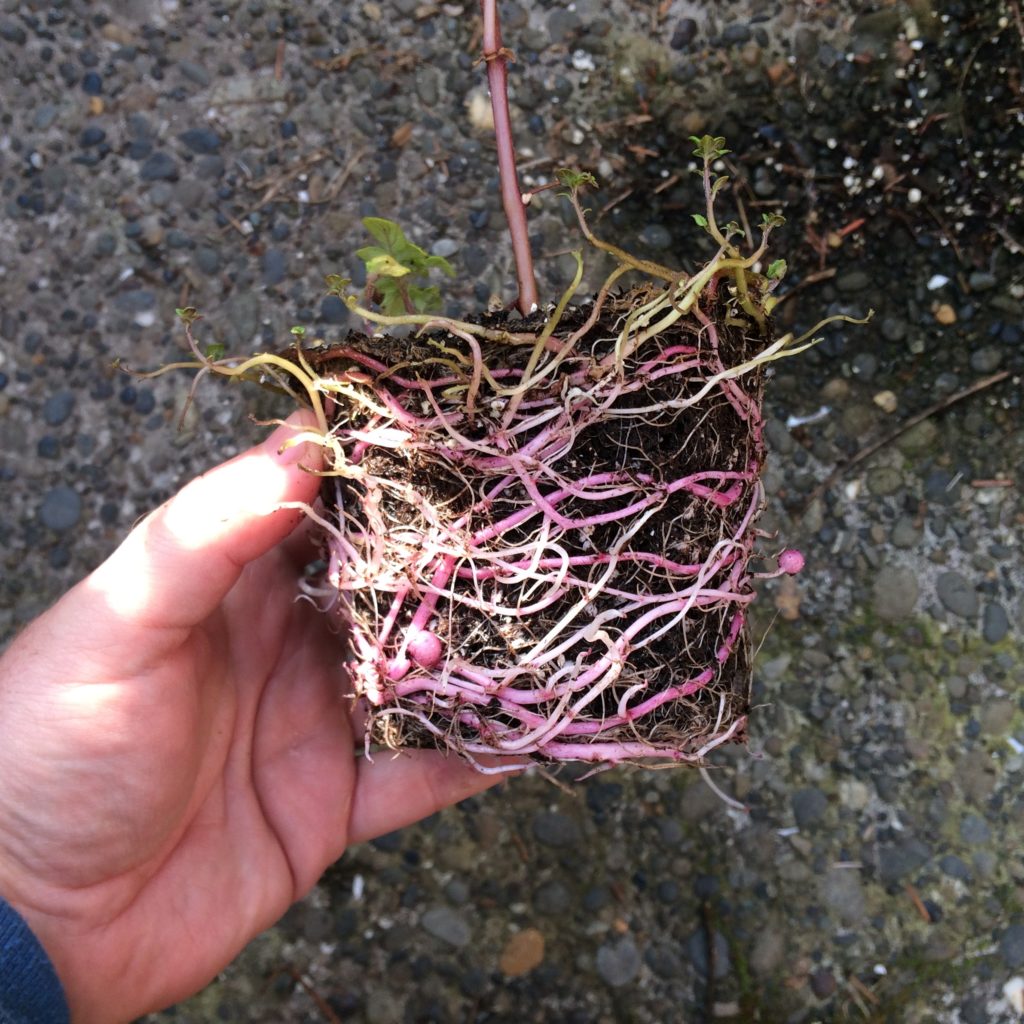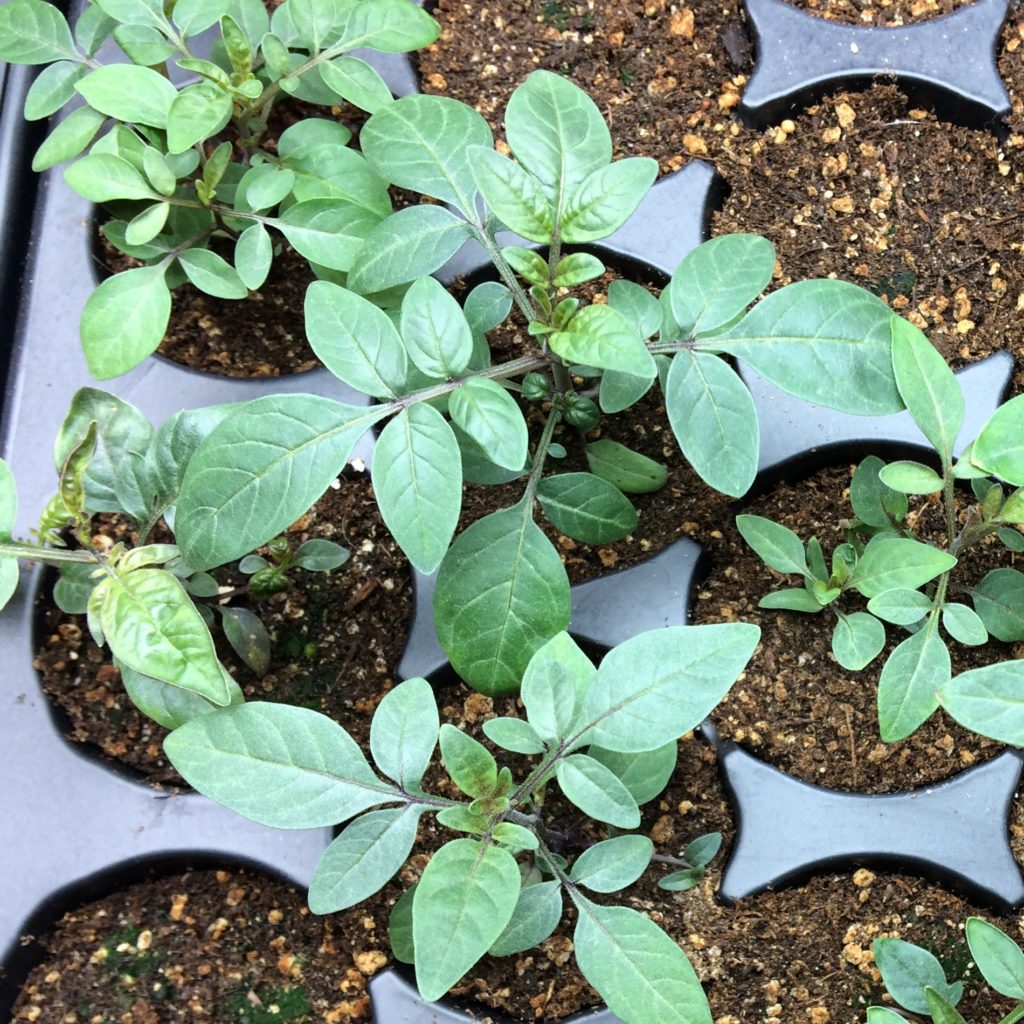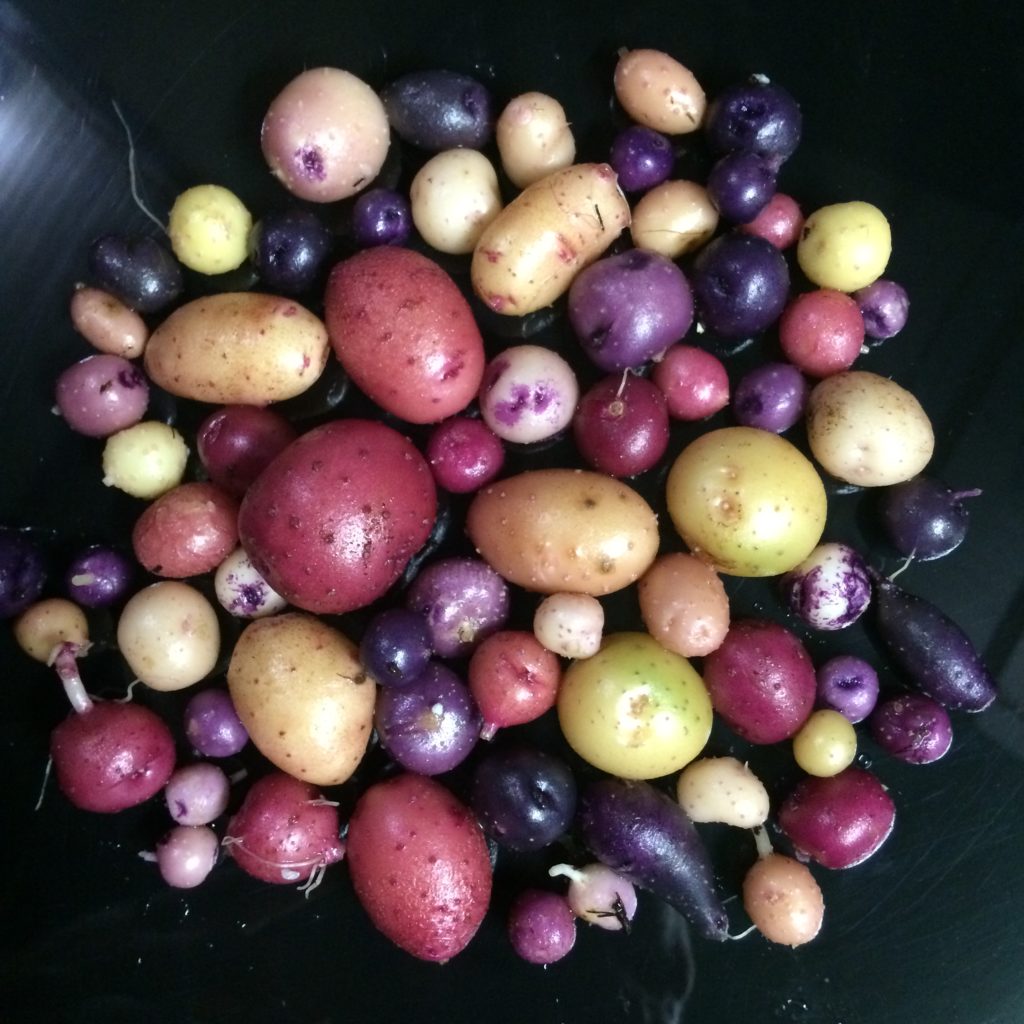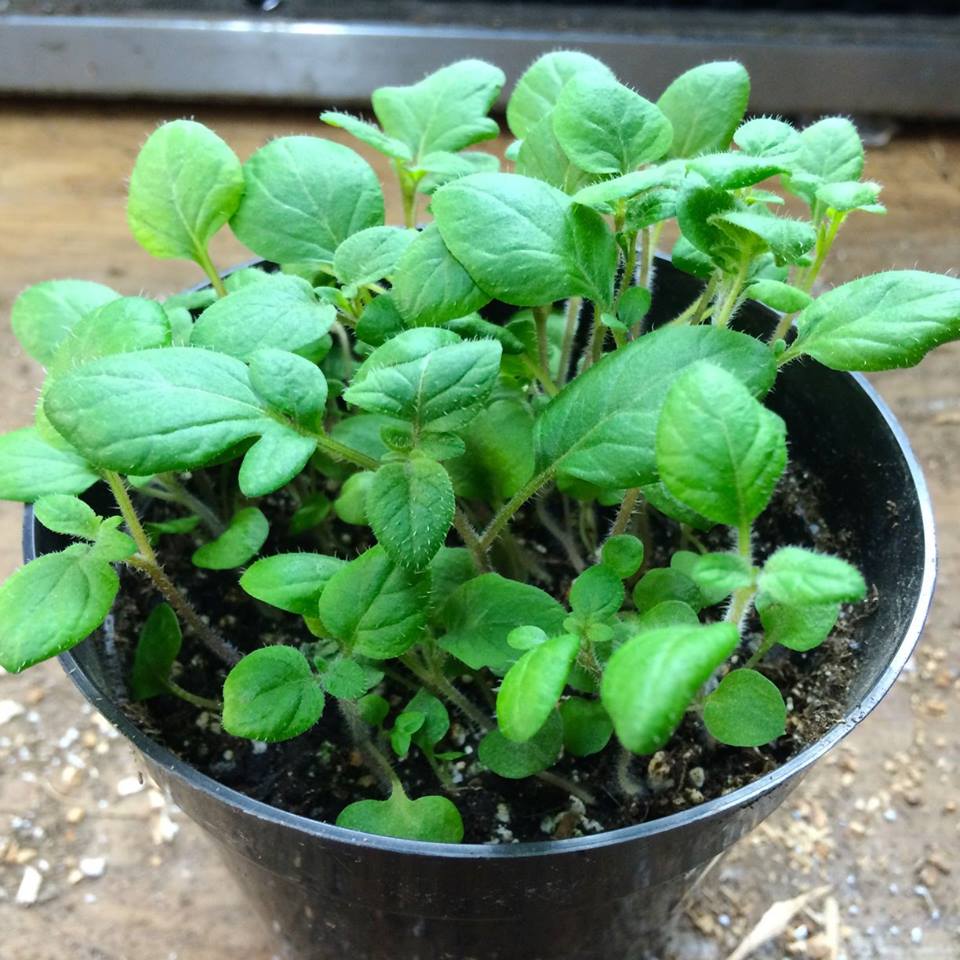Blog, potato (Solanum tuberosum)
Top 10 Beginner Mistakes with True Potato Seeds (TPS)
Growing new varieties of potatoes from true potato seeds is a lot of fun, but there is definitely a learning curve. This post covers some of the most common mistakes that I have seen beginners make (and, in many cases, once made myself).
1. Starting too early

This is probably the cardinal sin of growing potatoes from TPS. There is a clock running down from the moment that you start a potato seedling. It is different for each plant, but typically runs 6 to 8 weeks. After this point, many plants begin to form stolons and tubers. Transplanting after that point often means that you get a reduced yield. There are exceptions, but the best practice is to get those seedlings transplanted to the field no later than 6 weeks after germination (which should be about 8 weeks after sowing in most cases).
Ideally, you want to transplant potato seedlings out once the daily low temperature is at least 45F (7C) and the high temperature is at least 55F (13C). While seedlings will survive cooler conditions, they won’t grow much, which makes them vulnerable to pests, and they may develop nutrient deficiencies. So, you should estimate when these conditions occur in your area and then count back 8 weeks to your first sowing.
If you don’t have a really short growing season or scorching hot summers, then it is safe to wait longer. My growing season usually lasts through December and I often transplant out my last batch of July sown TPS seedlings in August. Four months from transplant should be enough time to grow most TPS seedlings to maturity, so if you have a first frost in October, you could transplant in June from a sowing made in April.
2. Not enough light
Potato seedlings require pretty intense light in order to develop into strong plants. Although similar in form to tomato seedlings, potato seedlings are more fragile and slower growing. People who have grown a lot of tomatoes from seed are often tempted to treat them similarly, but potato seedlings will struggle under conditions that are sufficient for tomatoes.
I recommend using either high output T5 fluorescent fixture or LED grow lights for TPS seedlings. I use 8 bulb high output T5 fixtures positioned about 18 to 24 inches (45 – 60 cm) above the plants and this works very well. Many people try to use standard fluorescent bulbs because they have them on hand. This can work, but you need to position the lamps about four inches from the tops of the seedlings and adjust frequently to keep them close enough without cooking the plants. It is a lot easier to use a high intensity fixture. If you are going to be growing a lot of potato seedlings, it is well worth the investment.
If you don’t give potato seedlings enough light, they will grow tall and spindly. You can recover from this by transplanting the plants into deeper containers, with only the top set of leaves emerging from the soil, but if you don’t give them more intense light after that, you will just end up in the same situation.
3. Too much water
Potato seedlings often suffer from damping off, a fungal disease where the stems are attacked at the soil line. The stems weaken and the seedlings fall over and die. The best way to prevent this is to water sparingly. I water thoroughly at sowing and then as often as the soil dries out. There is no rule that anyone can give you about how often to water because conditions vary. In each flat of seeds that I sow, I leave a cell unsown. When the flat is starting to look a bit dry, I stick my finger in the soil. When I can’t feel moisture at the bottom of the cell, I water. Under my conditions, this is usually about every 10 days.
4. Overcrowding / waiting too long to transplant

Many people sow TPS in crowded conditions since they will often pot up the seedlings once before transplanting to the field. If you grow this way, you can’t wait too long or you will end up with a badly entangled mess of spindly seedlings. Effectively, you end up with seedlings that didn’t get enough light. The cure is is same as for growing them under weak light: transplant deeply and then put the transplanted plants under strong light.
5. Sowing seed that is too fresh
Freshly harvested TPS is often dormant. When dormant, it will only germinate when grown between 50 to 68 degrees F (10 to 20 C) and, even then, it tends to have a lower total germination percentage. Not every variety produces strongly dormant seed, but many do. The easiest solution is to wait a year before sowing freshly harvested seeds, as most will have ended their dormancy by then. If you must sow fresh seed, keep a close eye on the temperature. Put a thermometer in the soil, because you might not realize how much lights tend to warm up the soil.
6. Sowing seed that is too old
TPS has a reputation for a very long seed life, but this is usually true only when the seed is stored at low temperatures (refrigerator or freezer temperatures). When stored at room temperature, germination often begins to decline after just a few years. If you are not storing seed under cold temperatures, you should probably plan to use it up within five years. Germination is likely to be pretty disappointing after that. You can get a little boost with old seed by treating with gibberellic acid.
7. Insufficient hardening
Hardening off is key to making sure that all of your efforts are not wasted when transplanting outdoors. Potato seedlings tend to be pretty fragile and both sun and wind will damage them when they are first taken outside. I use a doubling method, taking the plants out for an hour the first day, two hours the second, then four hours, eight hours, and finally overnight. Most seedlings will be ready for transplant after that.
8. Planting too shallowly
It can be hard to judge how deeply you should plant TPS seedlings. I try to get four to six inches of soil over the place on the stem where the seed leaves formed, but after potting up, you might have no idea where that is. The best practice here is the same as for potatoes grown from tubers: if you see tubers starting to poke out of the ground, add more soil to cover them. Exposed tubers become inedible due to glycoalkaloid production and are also vulnerable to pests.
9. Overfertilizing

Plants grown from TPS may be slower to form tubers than conventionally-grown plants and you can make that problem worse by giving them a nitrogen-heavy fertilizer. There is no way to give generalized advice about how to fertilize because it depends on what the fertility of your soil is like. The best practice would be to get a soil test and then bring up the nutrient levels in your soil to the low end of what is appropriate for potatoes. I think that the next best practice is to do nothing. I grow TPS following a mixed cover crop with no added fertilizers. Potatoes can generally tolerate pretty low nutrient levels and you are more likely to have TPS problems with too much than too little.
10. Harvesting too soon
It is very tempting to poke and prod those TPS seedlings, digging around to get a preview. You are always damaging the roots when you do this and, worse, probably the stolons as well. If you are an impatient type, you might consider growing your TPS seedlings in small pots. The yields will be lower, but the tubers will develop more quickly and you can save the small tubers to plant out the following year. If you have gone to the trouble of planting in the ground, best to leave those plants alone until the foliage begins to die back. You never know how long the plants will last when growing from TPS, so it is common to lose patience, but early harvests rarely pay off.


Brilliant advice:)
Thank so much your writter, my be variety will show to us how tubers strat of growing. Different varieties different star up. How about you ?